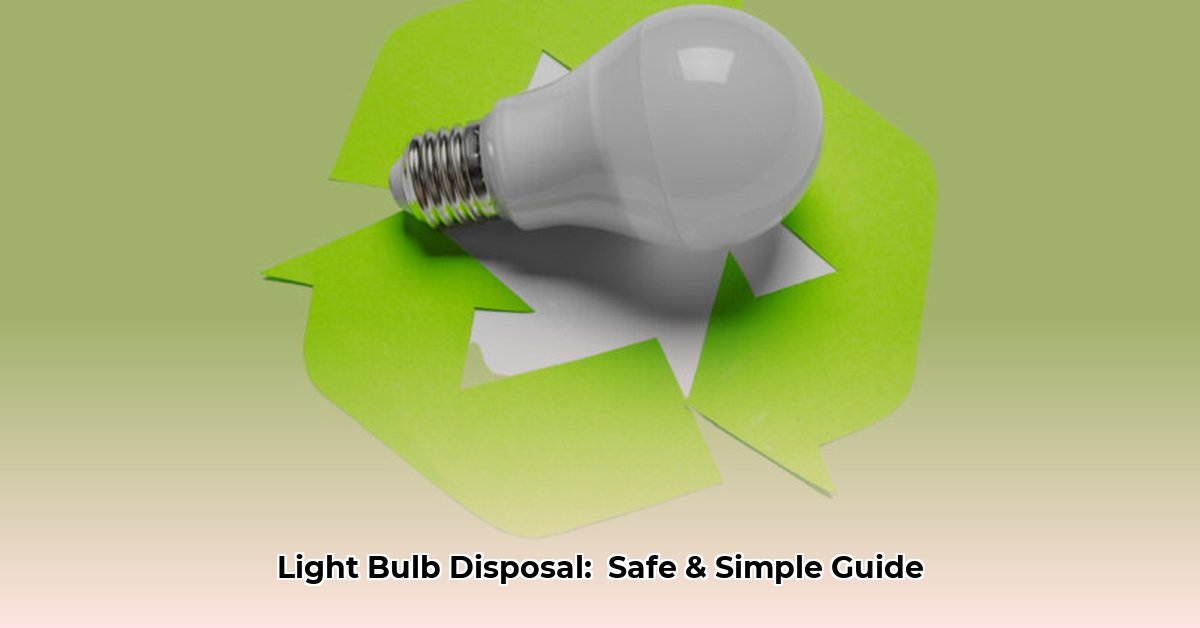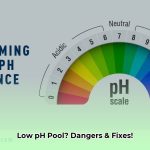This guide provides clear, step-by-step instructions for disposing of various types of light bulbs safely and responsibly.
Identifying Your Light Bulb Type
Before disposal, correctly identify your light bulb type. This determines the safest and most environmentally sound method.
Disposal Methods by Bulb Type
Here’s a quick breakdown of how to dispose of different light bulbs:
Incandescent and Halogen Bulbs
- Disposal: These common bulbs are generally safe for regular trash.
- Safety Tip: Wrap them in newspaper or a small box to prevent sharp edges from puncturing the trash bag. This also helps contain any tungsten filaments, minimizing potential environmental impact. Though small, these filaments can potentially leach into groundwater over time.
- Recycling: While not widely practiced, some recycling centers may accept these bulbs. Check with your local facility.
CFL Bulbs: Handling Mercury with Care
- Disposal: Do not throw CFLs in the regular trash. They contain a small amount of mercury, a potent neurotoxin.
- Recycling: Recycle CFLs at designated drop-off locations. Many home improvement stores (e.g., Home Depot, Lowe’s) and some local hardware stores participate in CFL recycling programs.
- Finding a Recycling Center: Search online for “[your city] + CFL recycling” or “household hazardous waste disposal [your city]” to find local options.
LED Bulbs: The Eco-Friendly (Mostly) Choice
- Disposal: While sometimes permissible in regular trash, recycling is the preferred method for LEDs. They might contain small amounts of recyclable materials like metals and electronic components.
- Recycling: Check with local recycling programs or retailer take-back options for LEDs. Resources like Earth911 can also help you find local e-waste recycling facilities.
- Long-Term Impact: Ongoing research aims to improve the recyclability and minimize the environmental impact of LED bulb components.
Fluorescent Tube Lights: Extra Caution Required
- Disposal: Similar to CFLs, fluorescent tubes contain mercury and should never be thrown in the regular trash.
- Recycling: Recycle fluorescent tubes at designated hazardous waste facilities or via specialized recycling programs. Handle them with extra care due to their size and fragility.
- Safety: Securely seal them in a bag or sturdy container to prevent breakage during transport.
What to Do if a Light Bulb Breaks
Broken bulbs, especially CFLs and fluorescent tubes, require careful handling due to potential mercury exposure.
Step-by-Step Cleanup Guide:
- Evacuate and Ventilate: Immediately clear the area, including pets, and open windows for at least 15 minutes to allow ventilation. Turn off your HVAC system if it’s running to prevent spreading contaminants.
- Protect Yourself: Wear gloves to protect your hands from broken glass and potential mercury.
- Careful Collection: Use stiff paper, cardboard, or sticky tape to gather the broken pieces. Avoid using a vacuum cleaner or broom, as these can spread mercury dust. A damp paper towel can be used for smaller fragments, but dispose of it immediately afterward in a sealed container.
- Containment and Disposal: Seal the collected debris, including cleaning materials and gloves, in a labeled container (e.g., zip-top bag, jar). Label it clearly as “Broken Light Bulb – Hazardous Waste.” Contact your local waste management authority for disposal instructions.
Finding Local Recycling Options and Resources
Several avenues are available for finding local recycling options:
- Local Government: Your city or county website likely has a section on recycling and waste management, often with a search function or directory of acceptable materials and drop-off locations.
- Waste Management Departments: Contacting your local waste management department directly can provide specific instructions and details on local recycling programs, collection events, or special handling procedures.
- Retailers: Some large retailers (e.g., Home Depot, Lowe’s) may offer in-store recycling programs for light bulbs. Check their websites or contact your local store to inquire about specific programs and accepted materials.
- Online Resources: Websites like Earth911 (Earth911.com) offer search tools to locate nearby recycling centers based on material type. These can be particularly useful for finding facilities that handle hazardous waste.
- Specialized Recycling Centers: A search for “[your city] + hazardous waste disposal” or “[your city] + electronics recycling” may help locate specialized facilities equipped to handle materials like mercury-containing bulbs. Note that some may charge a fee for disposal.
Why Proper Light Bulb Disposal Matters
Proper disposal contributes to a healthier environment:
- Mercury Containment: Recycling CFLs and fluorescent tubes prevents mercury, a dangerous neurotoxin, from contaminating landfills, soil, and water. While the exact level of risk from small amounts of mercury is still being studied, the scientific consensus is that recycling is the most prudent course of action.
- Resource Conservation: Recycling helps conserve valuable resources and reduces the need for energy-intensive mining and manufacturing.
- Landfill Reduction: Diverting light bulbs from landfills saves valuable space and minimizes environmental impact.
The Evolving Science of Recycling
Our understanding of recycling is constantly evolving. Ongoing research continually refines best practices for various materials. While current guidelines suggest specific disposal methods, keep in mind that these could change with future technological and scientific advancements. Stay informed about the latest recommendations from reputable sources like your local government and environmental agencies to make the most environmentally responsible choices.
- Memorial Stones for Gardens: A Guide to Creating a Lasting Tribute - April 29, 2025
- Melon Cut Diamonds: A Comprehensive Guide - April 29, 2025
- MarketStreet Lynnfield Stores: A Complete Directory & Shopping Guide - April 29, 2025










